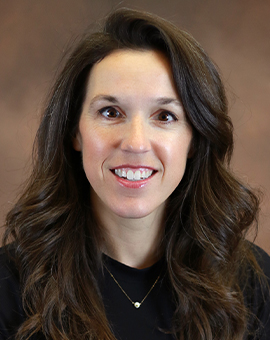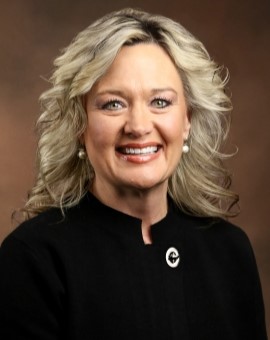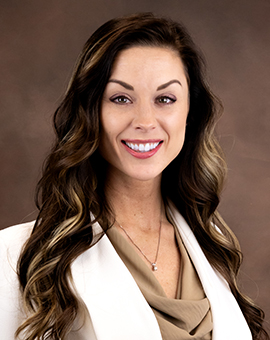Expert Insights on Retirement and Wealth Building
Women often face unique financial challenges while saving, investing, and preparing for retirement, but proactive planning is essential whether they are advancing careers, running businesses, or managing family.
We asked First Bank & Trust’s Kim Banks, Jordin Edwards, and Kelli Bullert to offer advice on career breaks, caregiving, catching up on savings, and navigating major financial transitions. Their guidance empowers women to take control of their financial future with confidence.
What are the most common retirement planning challenges faced by professional women today?
Kelli: One of the biggest challenges I see is that women often prioritize others, pausing careers for caregiving or working part-time. This can lead to lower lifetime earnings and smaller savings. Additionally, women live longer on average, meaning we need more retirement funds, not less. There is also often a confidence gap: many women feel uncertain about investing or planning, even when they are more than capable. The good news is these challenges can be solved with proactive planning.
Kim: I think the biggest challenge with retirement planning facing professional women is truly just taking the time to learn about it, planning, executing on that plan and then reviewing our plan at least annually to see if it needs adjusting. As professional women, our schedules are booked full almost every minute of every day, but we need to “pay ourselves first.” Our future selves and our families will thank us!
What’s one thing every woman should know about retirement planning?
Jordin: If I could tell every woman just one thing about retirement, it’s this: it’s probably going to last longer, and cost more than you think. That can sound scary, but it’s just a reminder to start as soon as you can and keep going, even if it’s a little at a time. Women usually live longer, tend to have more healthcare expenses, and take breaks from work for family—so our money must stretch further. The trick isn’t just saving a little here and there, it’s putting that money to work so it grows. Even small, steady amounts invested in something like a 401(k) or IRA can snowball over the years. So don’t stress about being perfect—just be consistent. Your future self will thank you.
How can women catch up if they’ve started saving later in life?
Kelli: It’s never too late to take control. I encourage women to start by getting clear on their numbers - know what you own, what you owe, and what you will need. From there, we can look at strategies like maxing out retirement contributions, using catch-up provisions if you are 50+, and aligning investments to work harder over time. Downsizing expenses, leveraging employer benefits, and creating multiple income streams - such as rental properties or side businesses - can all help accelerate progress. Most importantly, surround yourself with trusted advisors who listen, educate, and empower you to make confident choices.
Kim: Women who start saving later in life still have powerful strategies available to catch up and build a secure financial future. For example, taking full advantage of an employer’s 401(k) match or maximizing retirement contributions can lead to a large portfolio over time. While it’s tempting to chase high returns to make up for lost time, taking on too much risk can backfire. Using age-appropriate asset allocations helps balance growth and stability.
What recent legislative changes should women be aware of?
Jordin: The Secure 2.0 Act brought in a lot of changes to retirement plans, and most people don’t realize how helpful some of them can be—especially for women. You now have more flexibility around Roth accounts and required withdrawals, which means more control over when you tap into your savings. That’s huge when you think about longer lifespans and income that isn’t always steady.
Additional changes include bigger catch-up contributions, which is a gift during peak earning years, and a student loan matching provision that allows employers to make matching contributions to an employee's retirement account based on their qualified student loan payments, helping women juggle student loan debt and building retirement savings at the same time. And then there’s more flexibility around withdrawals, which can really matter in tough times like dealing with illness. While not flashy changes, they quietly give women more breathing room and more options, which makes a real difference in the long run.
How do you help women navigate major financial transitions?
Kelli: Financial transitions can be overwhelming, but they can also be empowering with the right guidance. It is important for women to understand their financial picture, establish clear goals, and build a roadmap forward. Depending on someone’s scenario, I would suggest focusing on understanding assets and setting up independent banking, planning for both immediate needs and long-term stability. It’s also important to protect wealth and anticipate tax implications, while aligning investments. Education and planning can bring confidence in these moments.
With the right strategies and a supportive team, women can address obstacles head-on and begin building a secure future. To put these insights into practice, consider the following tips to help strengthen your financial foundation and foster lasting confidence.
- Prioritize your financial future: Plan proactively, even if you've taken career breaks or worked part-time.
- Maximize retirement savings: Use employer matches and catch-up contributions to grow your portfolio.
- Prepare for transitions: Understand your assets, set goals, and build a roadmap for financial stability.
When you’re ready to ensure your finances can stand the test of time, contact an advisor. Our team includes several advisors equipped to offer tailored guidance and support your financial confidence.

Jordin Edwards
Wealth Management Relationship Manager
605.782.8062

Kim Banks
Wealth Management Relationship Manager
605.306.2542

Kelli Bullert
Senior Private Banker
605.782.8028


